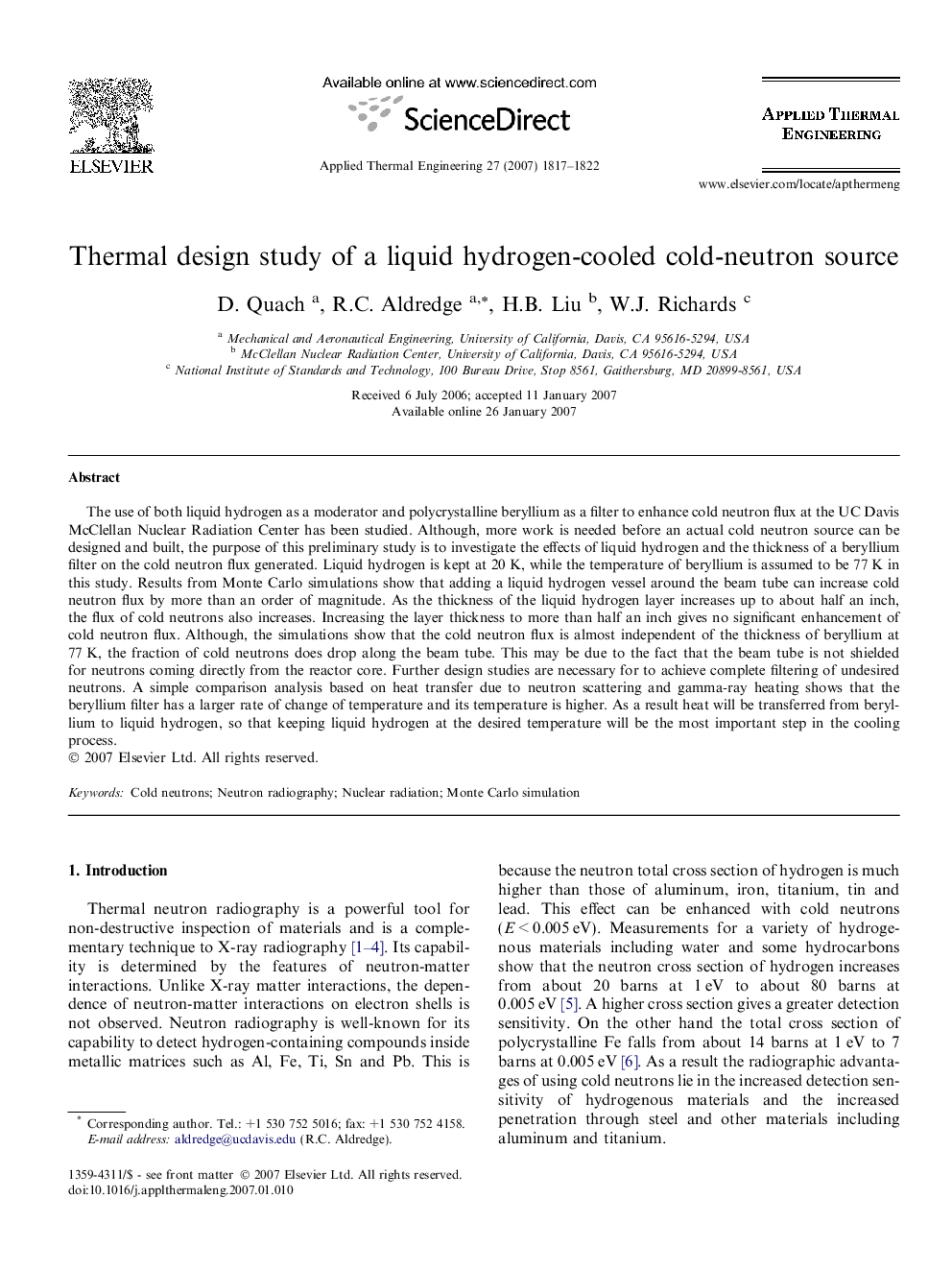| Article ID | Journal | Published Year | Pages | File Type |
|---|---|---|---|---|
| 649012 | Applied Thermal Engineering | 2007 | 6 Pages |
The use of both liquid hydrogen as a moderator and polycrystalline beryllium as a filter to enhance cold neutron flux at the UC Davis McClellan Nuclear Radiation Center has been studied. Although, more work is needed before an actual cold neutron source can be designed and built, the purpose of this preliminary study is to investigate the effects of liquid hydrogen and the thickness of a beryllium filter on the cold neutron flux generated. Liquid hydrogen is kept at 20 K, while the temperature of beryllium is assumed to be 77 K in this study. Results from Monte Carlo simulations show that adding a liquid hydrogen vessel around the beam tube can increase cold neutron flux by more than an order of magnitude. As the thickness of the liquid hydrogen layer increases up to about half an inch, the flux of cold neutrons also increases. Increasing the layer thickness to more than half an inch gives no significant enhancement of cold neutron flux. Although, the simulations show that the cold neutron flux is almost independent of the thickness of beryllium at 77 K, the fraction of cold neutrons does drop along the beam tube. This may be due to the fact that the beam tube is not shielded for neutrons coming directly from the reactor core. Further design studies are necessary for to achieve complete filtering of undesired neutrons. A simple comparison analysis based on heat transfer due to neutron scattering and gamma-ray heating shows that the beryllium filter has a larger rate of change of temperature and its temperature is higher. As a result heat will be transferred from beryllium to liquid hydrogen, so that keeping liquid hydrogen at the desired temperature will be the most important step in the cooling process.
